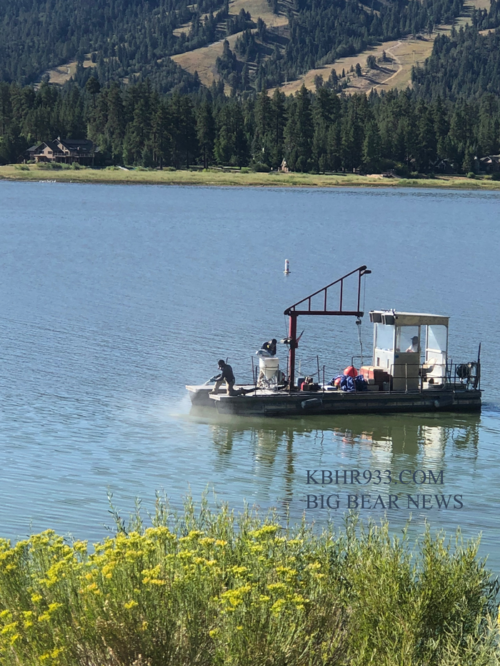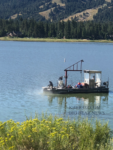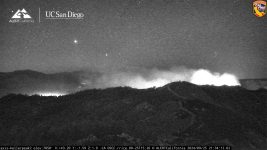

Big Bear, CA – Algae blooms are a natural and annual occurrence in many bodies of water throughout the country. They have become a national story line in recent weeks, but according the Big Bear Municipal Water District, there is little to no toxicity in the water of Big Bear Lake and very little indication that a harmful algae bloom is currently occurring in the areas that they’ve tested based on the cell count of harmful algae and toxicity of the samples. Regardless of the results of tests, it’s always recommended to never swim (or let pets near) where algae is thick and visible in the water.
The concerns of harmful algae blooms are going viral throughout the Nation. Although the stories range from abstract to some truth, it is important for everyone to be educated about the concerns of algae and public health. Most lakes this season, including Big Bear Lake, are seeing normal to above normal algae blooms due to the extreme run off of nutrients from the winter paired with very warm and calm weather. These blooms usually appear the heaviest in August when the lake mixes and can last several months. Although algae is always present in small numbers, blooms under the right conditions can spread very quickly. The lake is monitored daily during summer months for algae present and blooms have been observed from mid-July until current. With the current weather report, the likelihood of the algae increasing is likely.
The MWD recommends you use common sense and if it looks green and you observe a scum on the surface don’t go in or let your pets drink the water. If your pet goes in or you just want to take a ski run, take a shower and rinse your dog off. Ingesting the algae is never healthy and could cause stomach issues for you and your pet. Dogs will lick themselves clean after swimming in the Lake and combine that with drinking the water will magnify the toxins in the body. The bottom line is, use common sense and if it looks uninviting or you are uncertain, it probably should be avoided.


